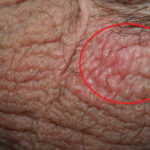Background
Hair loss, or alopecia, is a condition that affects millions worldwide—both men and women—impacting not just appearance but also self-esteem and quality of life. While various treatments exist, from topical solutions to oral medications, hair transplantation is often promoted as the gold standard for restoring a full head of hair. But is it truly a permanent, one-time fix? This article delves into the science, myths, and realities behind hair transplantation.
Understanding Hair Transplantation
Hair transplantation involves moving hair follicles from a donor area (usually the back or sides of the scalp) to areas experiencing thinning or baldness. The two primary techniques are Follicular Unit Transplantation (FUT), which involves removing a strip of scalp, and Follicular Unit Extraction (FUE), where individual follicles are harvested. Both methods aim to redistribute healthy hair follicles to achieve a natural look.
Scientific and Clinical Evidence: What the Data Tell Us
Clinical studies and long-term follow-ups suggest that transplanted hair follicles are generally permanent because they retain the characteristics of the donor site, which is typically resistant to the effects of dihydrotestosterone (DHT)—a hormone responsible for most common hair loss (androgenetic alopecia).
A 2019 meta-analysis published in the Journal of Dermatological Science found that survival rates for transplanted follicles can exceed 90% after one year, and most patients report significant satisfaction with their appearance. However, the transplanted hair only addresses the immediate recipient area. The surrounding native hair, which may still be affected by the underlying cause of hair loss, can continue to thin over time.
Case Vignette: Mr. Zhang’s Journey
Mr. Zhang, a 35-year-old software engineer, underwent FUE at age 30 to restore his receding hairline. For the first two years, he was thrilled with the results. However, by year four, he noticed new thinning behind the transplanted area. This is a common scenario—while the transplanted follicles were permanent, the progression of non-transplanted hair loss required further medical management and, in some cases, additional procedures.
Misconceptions and Harmful Behaviors
One of the most persistent myths is that hair transplantation is a one-time, permanent cure for all types of hair loss. In reality, the procedure only redistributes existing hair; it does not address the ongoing miniaturization and loss of non-transplanted follicles.
Some individuals, believing they are “cured,” neglect other aspects of hair health or discontinue medications (like minoxidil or finasteride) prematurely. Others may fall prey to unlicensed clinics or non-medical practitioners, risking infection, unnatural results, or scarring.
Correct Health Practices and Practical Recommendations
If you are considering hair transplantation, consult with a board-certified dermatologist or surgeon specializing in hair restoration. A thorough evaluation can determine the best approach, set realistic expectations, and identify whether you are a suitable candidate.
Ongoing medical management is often essential. Many professionals recommend combining transplantation with topical or oral medications to slow or halt further hair loss. Good scalp hygiene, avoiding harsh chemicals, and a healthy lifestyle can also help maintain both transplanted and native hair.
Expert Insights and Commentary
“I always remind my patients that hair transplantation is an art and a science,” says Dr. Wang Wei, a fictional dermatologist specializing in hair restoration. “While the results are long-lasting, it’s not magic. Genetics and ongoing scalp health still play a crucial role. Most patients benefit from a multimodal approach—surgery plus ongoing medical therapy.”
Conclusion
Hair transplantation can offer a lasting solution for many individuals struggling with hair loss, but it is not always a one-and-done fix. Understanding the limits of the procedure and taking proactive steps to protect remaining hair are key to achieving and maintaining satisfying results. The best outcomes come from combining skilled surgical technique with ongoing medical care and realistic expectations.
References
1. Rassman WR, Bernstein RM. Follicular Unit Transplantation: 2020 Update. Dermatol Surg. 2020.
2. Gupta AK, et al. Survival of transplanted hair follicles: Meta-analysis. J Dermatol Sci. 2019.
3. American Academy of Dermatology Association. Hair Loss: Who Gets and Causes. 2022.
4. Shapiro J, Unger WP. Hair Transplantation: Current Practice, Future Trends. Semin Cutan Med Surg. 2021.
For those considering or living with a hair transplant, knowledge is power—and the best foundation for a healthy head of hair.



